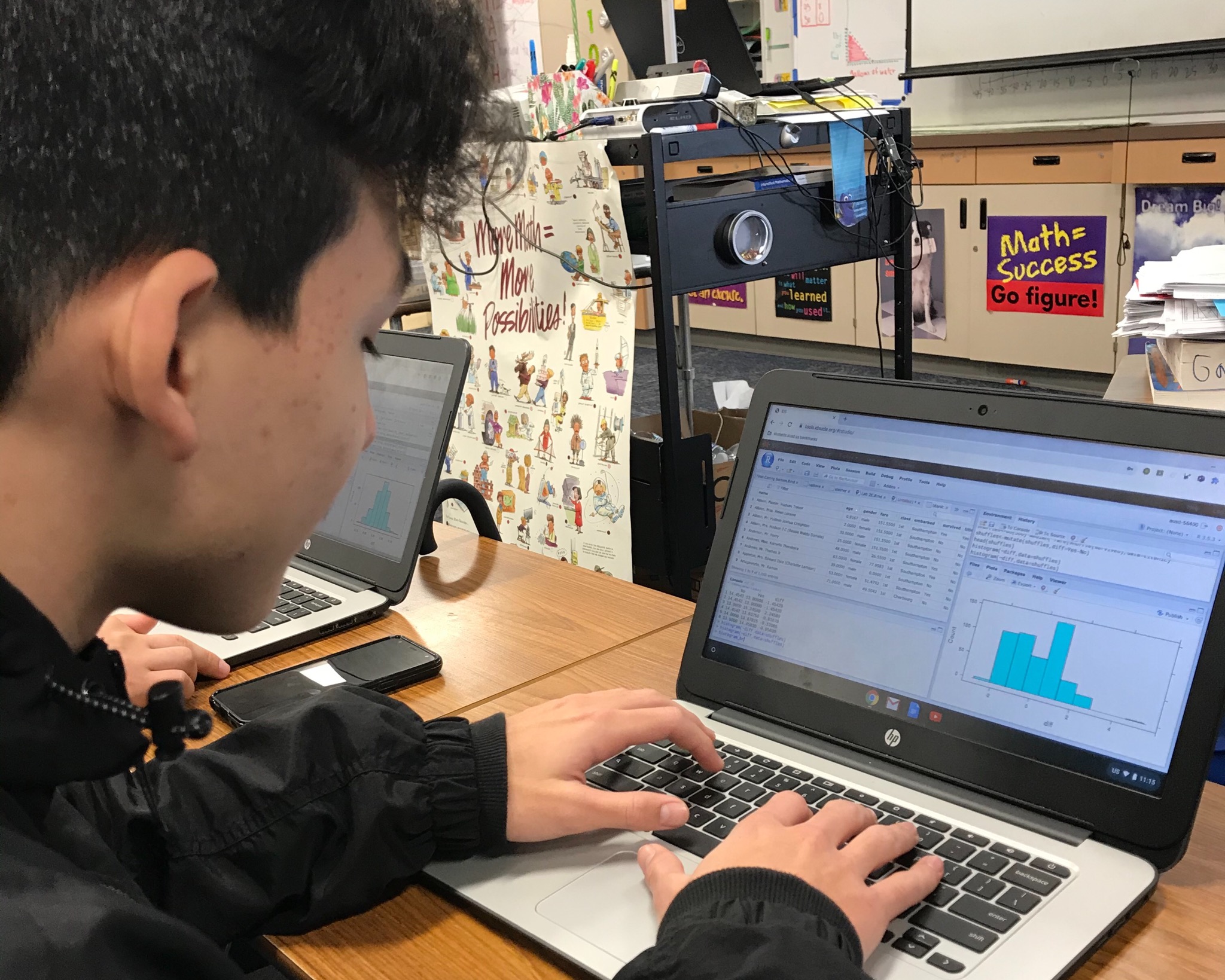
New data science class teaches students coding, statistics
Schools across the nation are beginning to offer classes to teach students real life skills through technology. This includes the Introduction to Data Science (IDS) class, which teaches the statistical analysis of big data through computing and mathematics, and hands on activities.
What initially began as a partnership between the University of California Los Angeles Center X and the Los Angeles Unified School District opened up to high school districts, such as the Alhambra Unified School District.
“IDS is similar to statistics, but the approach is different because in IDS, we use coding to analyze our data compared to doing it by hand in statistics,” statistics and IDS teacher Leah Ulloa said. “We work with much larger data sets, but there is an overlap in the concepts that we learn in both classes.”
Though all students are required to take Integrated Math I and II, students have the option of pursuing a statistics pathway in their third year of math by taking regular or AP Statistics or IDS.
“I took IDS because I wanted to try something new,” senior Wendy Gip said. “The difference between IDS and other math classes is you’re working on computers everyday and not doing problems by hand. The computer becomes your calculator as you are mainly inputting codes that analyze the data for you. Everybody learns differently, but for me, it’s a lot easier to comprehend the lessons in IDS.”
In IDS, students gather data to create labs and graphs through coding, so that they are engaged in their learning.
“When students gather information about themselves, they’re more interested in analyzing data because it’s not just coming from a textbook,” Ulloa said. “They can say, ‘this is our data’ because their work will be meaningful and relevant to them.”
Besides serving as an alternative to Integrated Math III for students, IDS also prompted community action on campus. When alumnus Matthew Perez noticed that breakfast foods were being wasted, he used data science to gather information about the most typical foods being thrown away. The Food Recovery Program was then started, allowing students to recycle uneaten foods.
“Change can take place by what students are learning in this class, and I think that is really powerful,” Ulloa said. “We’re really lucky to offer IDS here because it is a high tech, current class that engages students. They are never going to ask in that class, ‘when am I going to use this stuff?’”